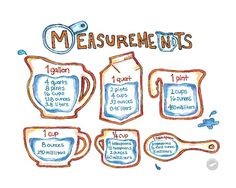Connectedness
Addition and Subtraction
(Liping Ma, 1999) quotes “Connectedness is where a teacher can show the children it is achievable to use one type of math they already know to solve another.” Addition and subtraction have an inverse relationship, and therefore is described in PUFM (Profound Understanding of Fundamental Mathematics) as ‘connectedness. For example, a number fact is made up of three numbers. These three numbers can also be used to make up other number facts. When the children know one, this helps them with others. Here is an example using the numbers 3, 4 and 7
Addition Facts Subtraction Facts
3 + 4 = 7 7 – 3 = 4
4 + 3 = 7 7 – 4 = 3
Most children generally find subtraction sums harder to learn than they do with addition sums. However, if a child knows that 6 + 9 = 15, but the question is in fact 15 – 9, even though this question is a subtraction sum, they can find the answer out using addition. For instance, they can think 9 plus what are 15? And they are gaining the same answer, using a different method. (Math steps, no date) quotes “this use of thinking of the related addition fact when children encounter a subtraction fact they don’t know should be encouraged. Children often find themselves either counting up or counting back to solve subtraction and that is inefficient.” However, if children are aware of the important inverse relationship that addition and subtraction hold, this will make it easier for them to undertake subtraction sums. Therefore, as a teacher, it is important to reinforce this idea to the children. You can do this through questioning; using questions that encourage this strategy of the inverse relationship between addition and subtraction.
Multiplication and Division
Multiplication and dividing also have an inverse relationship within mathematics. Multiplication and division are opposite operations and are both used in groups of equal size. (Lewis, 2005) quotes “Multiplication and division are very closely related. They are opposite operations. You could say division is ‘backwards’ multiplication”. Using this picture above, you can see that they can both be worked out using the same picture. For instance, if you have three pictures of four dogs, this can be written as 3 x 4 = 12 for multiplication and 12 ÷ 4 = 3 for division. Therefore, we can obtain both a multiplication fact and a division fact from the same picture.
https://www.youtube.com/watch?v=VrBAV43Swtw
Lewis, M. (2015) Understand multiplication and division relationships. Available at :http://learnzillion.com/lesson_plans/8460-understand-multiplication-and-division (Accessed 2 December 2015).
MathSteps: Grade 1: Inverse relationship between addition and subtraction: What is it? (no date) Available at: http://eduplace.com/math/mathsteps/1/b/index.html (Accessed: 2 December 2015).




